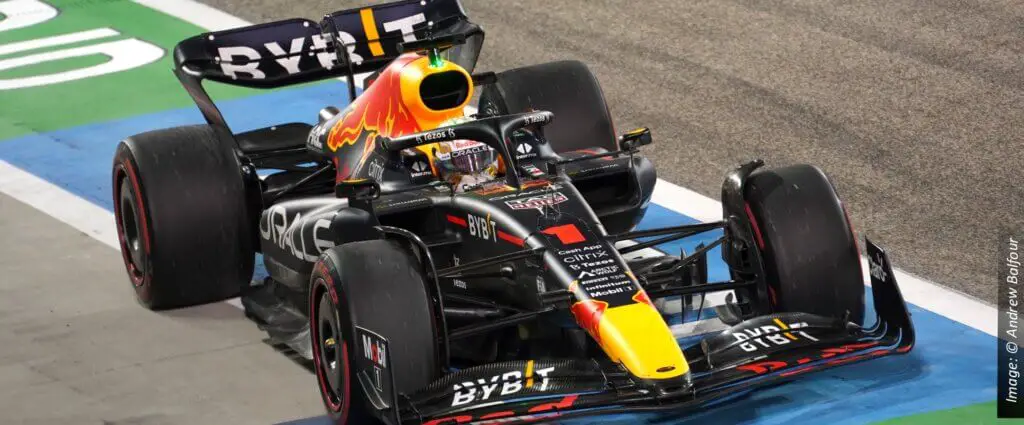At the 2022 Saudi Arabian Grand Prix, Max Verstappen became the first driver to win in car number 1 since Sebastian Vettel at the 2013 Brazilian Grand Prix. It set a new record for the longest gap between F1 wins for car number 1. But when were the other longest gaps? We take a look!
8 years, 4 months, 3 days: 2013 Brazilian Grand Prix – 2022 Saudi Arabian Grand Prix
Max Verstappen became the first driver to win in car number 1 in over 8 years at the 2022 Saudi Arabian Grand Prix. Taking the 182nd win in total with car number 1 on his car, Verstappen became the first driver to win in car 1 since Sebastian Vettel at the 2013 Brazilian Grand Prix.
Prior to the 2022 season, the number 1 had not been used in F1 since the 2014 Abu Dhabi Grand Prix. That’s due to a change in the sport’s numbering system. Since the start of 2014, each driver has picked a number for their career. Car number 1 is reserved for the reigning champion, should they wish to use it. Vettel opted to used number 1 on his car in 2014 but no one else did until Verstappen in 2022. Lewis Hamilton stuck with number 44 when he was reigning champion in 2015, 2016, 2018, 2019, 2020 and 2021, while Nico Rosberg retired after winning the title in 2016.
6 years, 2 months, 1 day: 1950 British Grand Prix – 1956 British Grand Prix
Formula 1’s numbering system was a little more chaotic in the sport’s formative years with no definitive system used in this time period. While drivers did use car number 1 between 1950 and 1955, it was not until the 1956 British Grand Prix that the car number took its first Grand Prix victory. Reigning champion Juan Manuel Fangio was the first driver to win a Grand Prix in car number 1, doing so at Silverstone in July 1956.
During this period, car number 1 was used at the Indianapolis 500, which was a round of the World Championship between 1950 and 1960. Johnnie Parsons won the 1950 Indianapolis 500 in car number 1 which was the third race to be held as a round of the F1 championship. If you include that as an F1 win – even though the race was never run to F1 regulations – this gap between victories for car number 1 drops to 6 years, 1 month and 14 days.
2 years, 10 months, 24 days: 1960 British Grand Prix – 1963 Belgian Grand Prix
Almost three years passed between victories for car number 1 at the 1960 British Grand Prix and the 1963 Belgian Grand Prix. Jack Brabham took victory for Cooper at Silverstone in 1960. Brabham failed to win in car number 1 as reigning champion in 1961, while Phil Hill, Graham Hill and Jim Clark failed to win using car number 1 in 1962.
Clark would finally end the win-less streak for the car number at the 1963 Belgian Grand Prix. It was the second of four consecutive victories at Spa-Francorchamps for the Scottish driver.
2 years, 7 months, 3 days: 1996 Italian Grand Prix – 1999 Brazilian Grand Prix
After the 1963 British Grand Prix, it would be over 30 years until the next longest gap between wins for car number 1. Michael Schumacher took his first Italian Grand Prix win as a Ferrari driver in September 1996, which remained the last win for car number 1 until Mika Hakkinen’s victory at the 1999 Brazilian Grand Prix.
In 1997, reigning World Champion Damon Hill took car number 1 to the uncompetitive Arrows team. Though the Brit came heartbreakingly close to victory at the Hungarian Grand Prix, the machinery was rarely in the battle for points at other races in 1997. The next year, reigning World Champion Jacques Villeneuve failed to take any wins with Williams.
2 years, 6 months, 13 days: 1992 Italian Grand Prix – 1995 Brazilian Grand Prix
The fifth longest gap between wins for cars number 1 came between Ayrton Senna’s win at the 1992 Italian Grand Prix and Michael Schumacher’s win at the 1995 Brazilian Grand Prix. The car number 1 did not appear in any races in 1993 or 1994. Nigel Mansell retired from F1 after winning the title in 1992, while Alain Prost retired from F1 after winning the title in 1993.
This article was originally published in March 2022 and has since been updated.




